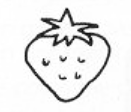Hey, I warned you something like this was gonna happen!
Anyway, this is a Less Play of Dark Adventure. A Less Play is kind of like a Let's Play, but shorter. And Dark Adventure is Konami's dip of the toe into the arcade RPG genre first popularized by Atari's Gauntlet. Spoiler alert: it's not that good. But hey, it kept my brother and I out of trouble whenever we visited the Jewel-Osco in Michigan.
There was a revamp of the game called Majuu no Okoku, released only in Japan. That game featured some key improvements over the original. It also lost Zorlock, but that's a small price to pay for improved weapons and a life bar that doesn't dwindle to nothing in a matter of seconds.





































